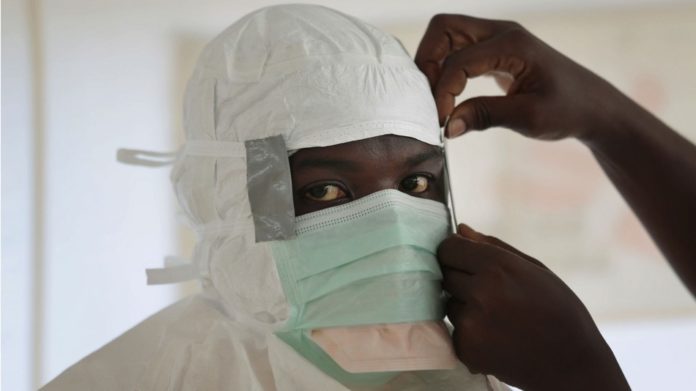Ebola Protocols for Treating Patients to Include Protective Gear With No Skin Showing

WASHINGTON — Revised guidance for health care workers treating Ebola patients will include using protective gear “with no skin showing,” a top federal health official said Sunday.
Dr. Anthony Fauci, head of the National Institute of Allergy and Infectious Diseases, said those caring for an Ebola patient in Dallas were left vulnerable because some of their skin was exposed.
The Centers for Disease Control and Prevention is working on revisions to safety protocols. Earlier ones, he said, were based on a World Health Organization model in which care was given in more remote places, often outdoors, and without intensive training for health workers.
“So there were parts about that protocol that left vulnerability, parts of the skin that were open,” Fauci said. “Very clearly, when you go into a hospital, have to intubate somebody, have all of the body fluids, you’ve got to be completely covered. So that’s going to be one of the things … to be complete covering with no skin showing whatsoever.”
Ebola’s incubation period is 21 days, and Fauci noted that mark was being reached Sunday for Texas Health Presbyterian Hospital workers who first treated Thomas Eric Duncan, the Liberian man who later died of the disease.
“The ones now today that are going to be ‘off the hook’ are the ones that saw him initially in the emergency room,” said Fauci, representing the Obama administration on five Sunday news shows.
Duncan sought medical care at the hospital on Sept. 25, but was sent home with antibiotics. He returned by ambulance on Sept. 28, was diagnosed with Ebola on Sept. 30 and died on Oct. 8.
Judge Clay Jenkins, the chief executive in Dallas County, said the protective order that has kept Duncan’s family isolated expires Sunday at midnight. “That’s going to be a good thing for those families. They’ve been through so much, and we’re very happy about that,” Jenkins said.
But, he continued, “At the same time, we’re extremely concerned about these health care workers, and we continue to make contingency in the event that there are more cases.”
Forty-eight people remain on the watch list, but if no new cases are reported this weekend, the watch list will be cut by almost a third on Sunday night.
Jenkins called the 75 health workers who cared for Duncan “hometown health care heroes,” and said they had signed agreements with the state’s public health commissioner to stay off public transportation.
He said if any other health workers test positive for Ebola, a plan is in place that includes the following:
-
All intake will be done at Texas Health Presbyterian Hospital.
-
Ambulances have been instructed to bring anyone with a history of West Africa travel and a fever to that hospital.
-
Those found to be infected will be transferred by air ambulance to one of three national health centers set up to handle very risky germs, or by ground ambulance to the University of Texas Medical Branch at Galveston, which is capable of disposing the “copious waste” that Ebola cases generate.
-
If a large number of cases surface, a triage unit at another, undisclosed location will be set up in the next 24 hours, with isolation units. The location was to be announced later Sunday.
Fauci appeared on ABC’s This Week, NBC’s Meet the Press, Fox News Sunday, CNN’s State of the Union and CBS’ Face the Nation. Jenkins was on ABC.
Additional reporting by Mashable
Have something to add to this story? Share it in the comments.
